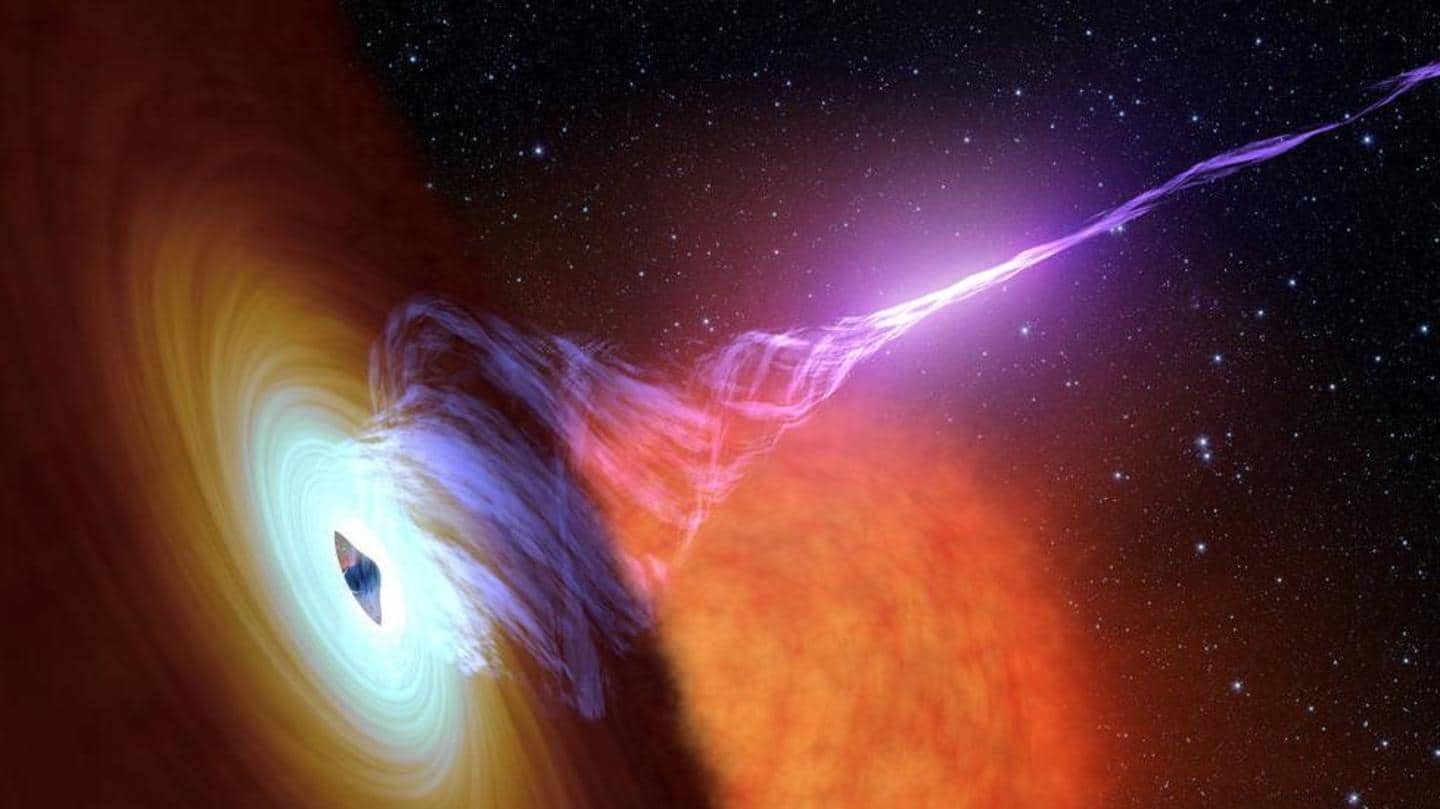
Black hole jet 50 times larger than its galaxy discovered
What's the story
Black holes are known for devouring light and matter. Interestingly, some of them emit the same light and matter outward.
It's called a black hole jet. Now, scientists at Western Sydney University have discovered one of the largest jets ever.
Spanning more than a million light-years from end to end, this stream of white hot plasma is 50 times larger than the galaxy itself.
Context
Why does this story matter?
We know what causes black holes to swallow everything around them. However, black hole jets remain one of the biggest mysteries in the universe.
Our understanding of them is still at a nascent stage. Considering that, the discovery of such an expansive jet is a huge step in the right direction.
It may help us unravel some of the mysteries surrounding black hole jets.
Galaxy
The black hole jet is located in the NGC2663 galaxy
The gigantic jet belongs to the supermassive black hole at the heart of the galaxy NGC2663, which is 93 million light-years away from our galaxy. Cosmically speaking, it is a close neighbor of ours.
Astronomers discovered the jet when they observed the galaxy with Commonwealth Scientific and Industrial Research Organization's (CSIRO) Australian Square Kilometre Array Pathfinder (ASKAP) super-telescope in Western Australia.
The jet
Astronomers found the jet after analyzing radio waves
The ASKAP is a network of 36 linked radio dishes. When astronomers analyzed radio waves from the galaxy, they detected a jet of matter spewed out of the galaxy by a central black hole.
Upon further analysis, they found that the high-powered stream of material is 50 times larger than the galaxy itself.
It would appear bigger than the moon to the naked eye.
Similarity
Intergalactic matter pushes the jet from its sides
With the help of Evolutionary Map of the Universe (EMU) survey, researchers found out that matter between galaxies is pushing the jet from its sides.
Similarly, when the exhaust plume from a jet engine blasts through the atmosphere, it is pushed from the sides by ambient pressure.
This causes the jet to expand and contract. This pulsating appears as bright spots called 'shock diamonds.'
Rare
Shock diamonds have never been seen on such enormous scale
Shock diamonds, like in the case of jet engines, are also seen in smaller back hole jets. Until NGC2663, this phenomenon has not been observed on such a large scale.
This proves the presence of enough matter in the intergalactic space around the galaxy. This jet slows down the supply of intergalactic matter into galaxies.